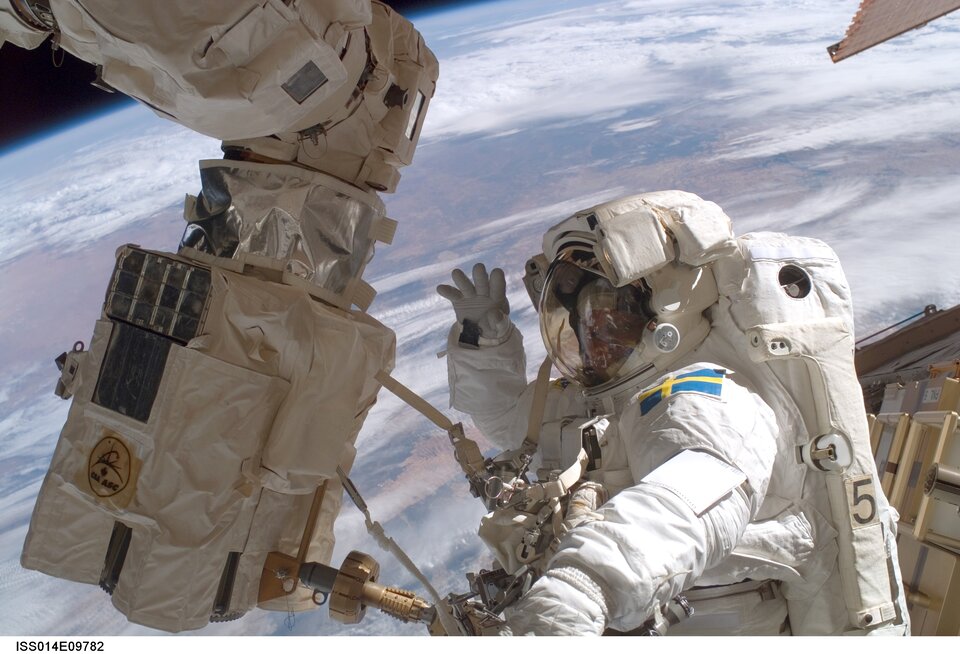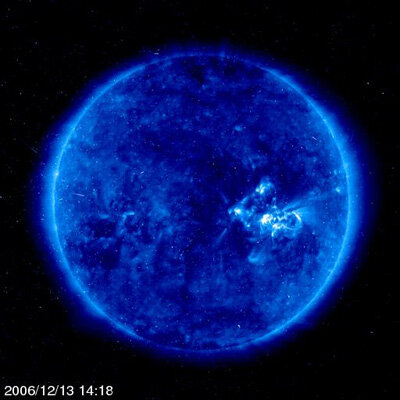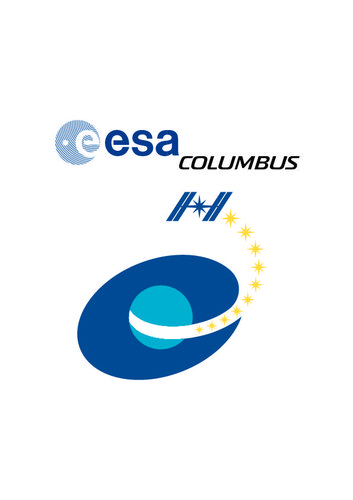Predicting the radiation risk to ESA’s astronauts
European scientists have developed the most accurate method yet for predicting the doses of radiation that astronauts will receive aboard the orbiting European laboratory module, Columbus, attached to the ISS this week.
The new software package accurately simulates the physics of radiation particles passing through spacecraft walls and human bodies. Such techniques will be essential to use for calculating the radiation doses received by astronauts on future voyages to the Moon and Mars.
To predict accurately the radiation risk faced by astronauts, scientists and engineers must tackle three separate problems: How much radiation is hitting the space vehicle? How much of that radiation is blocked by the available shielding? What are the biological effects of the radiation on the astronauts?

This project, funded by ESA’s General Studies Programme and the Swedish National Space Board, mostly concentrates on the second of those questions. It was initiated by Christer Fuglesang of ESA's European Astronaut Corps.
During a stay onboard the ISS in December 2006, he experienced firsthand the effects of space radiation. "You see flashes when you close your eyes as a result of interactions with your eye," he says.
The frequency of these flashes depends on where the ISS is in its orbit and the level of solar activity. There was a solar storm whilst Fuglesang was in space. "That night we were told to sleep in the more shielded sections of the station," he says.
The ESA simulation is called Dose Estimation by Simulation of the International Space Station (ISS) Radiation Environment (DESIRE). "The project was designed to provide a European capability in accurately predicting radiation doses onboard Columbus," says Petteri Nieminen, ESA’s Technical Officer on the study.
The first step was to build a programme that would accurately simulate the physics of radiation passing into a spacecraft and then through a human body. To do this, Tore Ersmark of the Royal Institute of Technology (KTH), Stockholm, Sweden worked with several existing software packages. These included a software toolkit known as Geant4, which simulates the propagation of radiation particles. Geant4 has been successfully used in disciplines such as space physics, medical physics and high-energy physics, and is developed by a large international collaboration involving ESA, CERN, and many other institutes and universities.
One of the lengthiest aspects of the work was that Ersmark had to build from scratch a computer model of the International Space Station itself. The configuration and orientation of the ISS are crucial parameters in defining the amount of matter that radiation passes through.
The Columbus module, launched into space by NASA's Space Shuttle on 7 February, is the most ambitious and sophisticated contribution to human spaceflight that Europe has yet made. It is equipped with radiation monitors to test the DESIRE predictions. "We are really pleased with the results from DESIRE and look forward to comparing them to the actual measurements," says Petteri.
Inside Columbus, during quiet solar times, the radiation levels are expected to be low. "Although they are several hundred times greater than the background radiation level here in Sweden, that is still not dangerous," says Ersmark.
Beyond Columbus, the DESIRE tool can be developed into a European software package that can be used to predict the radiation risks for other manned space flight missions, both close to Earth and beyond the protection of our planet’s magnetic field.

The radiation environment close to Earth consists of three main components: Particles trapped in the Earth’s magnetic field; particles that arrive from deep space called Galactic Cosmic Rays (GCRs) and particles expelled from the Sun during solar eruptions. These components all vary with time, mainly due to the unpredictable activity of the Sun, which influences the Earth’s magnetic field. In turn, the Earth’s field determines the extent of the trapped particles and how well Earth is shielded from incoming GCRs.
Beyond Earth’s magnetic field, spacecraft and their occupants will be exposed to the full force of the GCRs and the solar eruptions. Missions to the Moon and Mars will venture into this harsher and unpredictable radiation environment for periods of many month or even years.
During the Apollo missions of the 1960s–70s, the astronauts were simply lucky not to have been in space during a major solar eruption that would have flooded their spacecraft with deadly radiation. Essentially, they took risks and got away with it. For the kind of long-duration journeys being talked about today, a far more robust system of predicting radiation doses is required.
"The main uncertainties in these calculations are our knowledge of the space radiation environment beyond the Earth’s magnetic field, and the biological response to radiation," says Ersmark.
To provide the environmental information ESA is flying a standard radiation monitor on a number of its spacecraft, including Proba-1, Integral, Rosetta, GIOVE-B, Herschel and Planck. Known as the Standard Radiation Environment Monitor (SREM), it measures high-energy radiation particles. It was developed and manufactured by Oerlikon Space in cooperation with Paul Scherrer Institute, under a development contract from ESA.
Developing the appropriate strategies and countermeasures to deal with the interplanetary radiation hazard is essential. At present it is one of the most difficult challenges to our exploration the wider solar system. Thanks to DESIRE, Europeans have taken a step towards being able to test future space vehicle designs to find those that offer the most protection.






